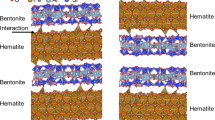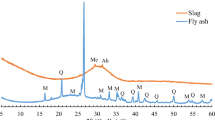Summary
-
1.
The strength of zeolite samples granulated with clay binders is reduced to 1/2–1/3 or less, of the original value during the transition from the “dry” to the wet state and also during exposure to alcohol. A particularly marked reduction in strength occurs in completely saturated granules and in granules formed solely from clay without zeolite. These effects are due to a reduction in strength of the clay binder by adsorption. Our experimental data should be taken into account in a search for the optimum content and composition of the binder.
-
2.
When it is considered whether molded zeolites may be employed in actual adsorption systems and have the appropriate mechanical strength for this application, it is indispensable to estimate the strength index of the zeolite not only in the “dry” state, but also under conditions corresponding to the actual operation conditions, for, reduction of the free surface energy by adsorption may markedly lower the strength and shorten the lifetime of the granules.
-
3.
The resistance of granules to adsorptive reduction of the strength during exposure to moisture increases noticeably with the firing temperature, since the conditions of irreversible sintering of the clay are improved, i.e., coagulation contacts between the particles are converted into crystallization contacts. It is, therefore, convenient to carry out the firing treatment at the highest admissible temperature (where the sorption characteristics of the zeolites are still preserved).
-
4.
Comparison of data on the wear and crushing strengths shows that the relationship between these parameters is markedly nonlinear; only in a restricted range of granule strengths does the grinding regime chosen warrant a sufficient sensitivity and an objective estimate. This must be borne in mind in all wear tests on sorbents or catalysts.
Similar content being viewed by others
Literature cited
VTU on the Molding of Type A and Z Zeolites, No. MRTU 6-01-567-63.
P. A. Rebinder, E. D. Shchukin, and L. Ya. Margolis, DAN SSSR, 154, 695 (1964).
E. D. Shchukin, Kinetika i Kataliz, 6, 641 (1965).
E. D. Shchukin, M. V. Dukarevich, S. I. Kontorovich, and P. A. Rebinder, DAN SSSR, 167, 153 (1966).
S. M. Vainshtein, E. Ya. Gienko, A. T. Slepneva, B. A. Lipkind, and V. A. Burylov, Zeolites, Their Synthesis, Properties and Application [in Russian], Izd. Nauka(1965), p. 207.
Author information
Authors and Affiliations
Additional information
Translated from Khimiya i Tekhnologiya Topliv i Masel, No. 3, pp. 8–12, March, 1967.
Rights and permissions
About this article
Cite this article
Slepneva, A.T., Lipkind, B.A. & Shchukin, E.D. Reduction of the strength of molded zeolites by adsorption. Chem Technol Fuels Oils 3, 159–162 (1967). https://doi.org/10.1007/BF00730962
Issue Date:
DOI: https://doi.org/10.1007/BF00730962




